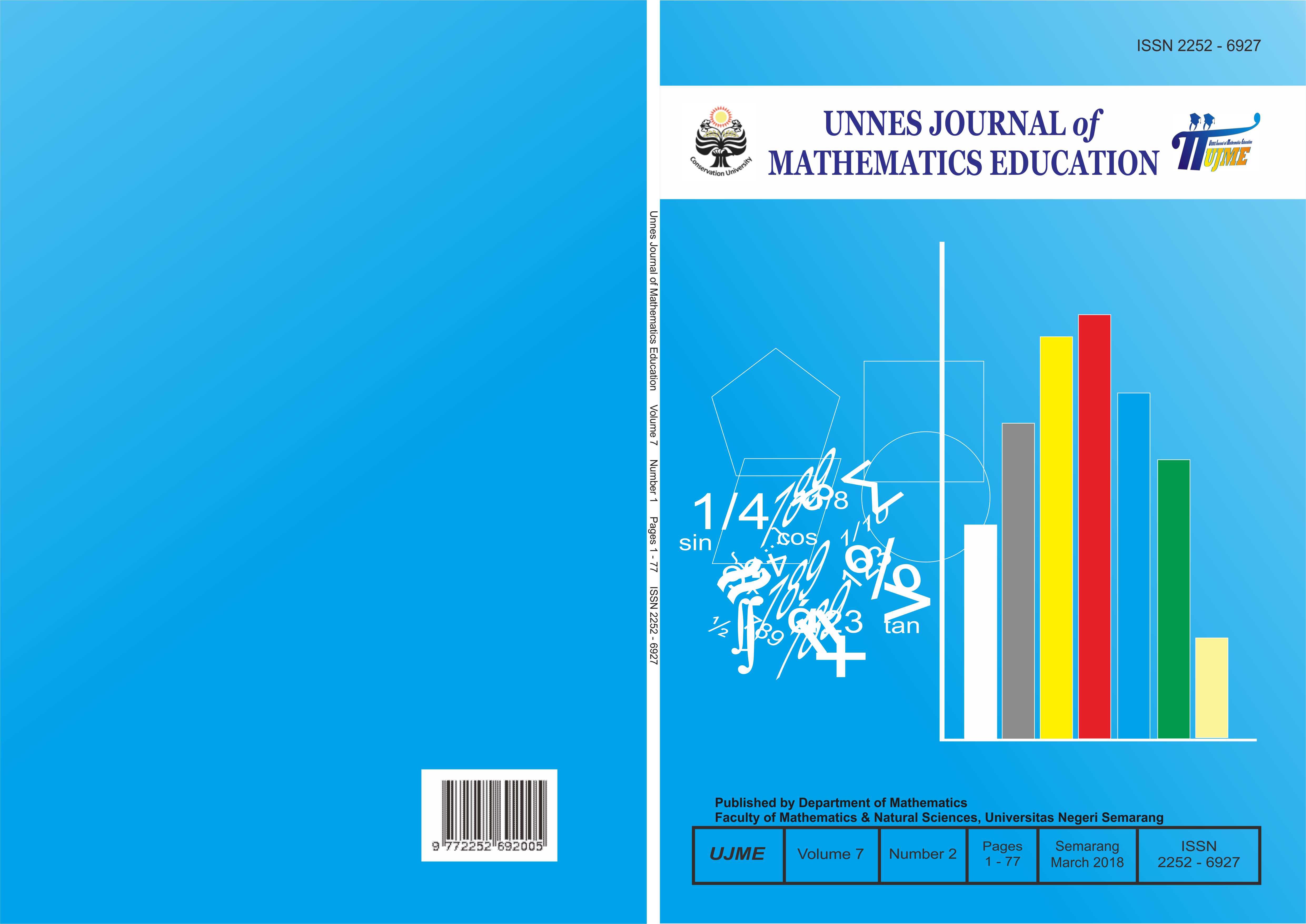The mathematical problem solving ability of student on learning with Thinking Aloud Pair Problem Solving (TAPPS) model in term of student learning style
##plugins.themes.academic_pro.article.main##
Abstract
The purposes of this research were to find out the mathematical problem solving ability on learning with TAPPS model and to find out how the description of mathematical problem solving ability on TAPPS model in terms of learning style. This mixed methods research used concurrent embedded design. The population in this research was eighth-grade students of SMP N 4 Kudus in the academic year of 2016/2017. The sample was chosen by using random sampling technique, it obtained that VIIIA as experimental class and VIIIB as control class. The results of the research showed that (1) the mathematical problem solving ability on learning with TAPPS model achieved classical mastery, (2) the mathematical problem solving ability on learning with TAPPS model was better than expository model, (3) the students' ability in mathematical problem solving with a visual learning style had good category at the stage of devising a plan and the other stage had enough category, otherwise students with an auditorial learning style had enough category at the stage of looking back and another stage had good category, and students with a kinesthetic learning style had good category at the stage of understanding the problem and the other stage had enough category and less category.
##plugins.themes.academic_pro.article.details##
References
DePorter, B & Hernacki, M. (2008). Quantum Learning. Bandung: Kaifa.
Handayani, L, S., Syafriandi, & Mirna. (2014). Pengaruh Metode Think Aloud Pair Problem Solving (TAPPS) terhadap Kemampuan Komunikasi Matematika Siswa SMA. Jurnal Pendidikan Matematika, 3(1), 50-55.
Indrawati, R. (2017). Profil Pemecahan Masalah Matematika Ditinjau dari Gaya Belajar. Jurnal Program Studi Pendidikan Matematika, 3(2), 91-100.
National Council for Teachers of Mathematics. (2000). Principles and standards for school mathematics. Reston, VA: NCTM.
Nugroho, A. M., Suyitno, H., & Mashuri, M. (2013). Keefektifan Model Pembelajaran Teams Games Tournament terhadap Kemampuan Pemecahan Masalah. Unnes Journal of Mathematics Education, 2(1), 159-165.
Peraturan Menteri Pendidikan Nasional Republik Indonesia Nomor 22 tahun 2006 tentang Standar Isi Sekolah Menengah (Decree of The Indonesian Minister of National Education Number 22, 2006)
Tiffani, H. (2015). Profil Proses Berpikir Siswa Smp Dalam Menyelesaikan Soal Perbandingan Berdasarkan Gaya Belajar Dan Gaya Kognitif (Undergraduate Thesis, Universitas Muhammadiyah Surakarta).
Stice, J. E. (1987). Teaching Problem Solving. https://inst.eecs.berkeley.edu. Accessed February 3th, 2017.
Sugiyono. (2016). Metode Penelitian Kombinasi. Bandung: Alfabeta.
Unaifah, F., & Suprapto, N. (2014). Profil Kemampuan Pemecahan Masalah dan Hasil Belajar Siswa pada Materi Elastisitas Ditinjau dari Gaya Belajar (Learning Style). Jurnal Inovasi Pendidikan Fisika, 3(2), 27-32.
